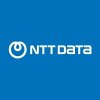Filter interviews by
EPAM Systems ETL Tester Interview Questions and Answers
12 Interview questions
ETL testing is the process of validating and verifying data extraction, transformation, and loading in a data warehouse or data mart.
ETL testing involves ensuring data is extracted correctly from the source systems
It also involves verifying that data is transformed accurately according to business rules
Lastly, ETL testing checks that the loaded data is accurate and complete in the target database
Examples include v...
A data warehouse is a centralized repository that stores structured and unstructured data from multiple sources for analysis and reporting.
Data warehouses are designed for querying and analysis rather than transaction processing.
They often contain historical data that is used for creating reports and data analysis.
Data warehouses typically use ETL processes to extract, transform, and load data from various sources...
I will produce test plan, test cases, test scripts, defect reports, and test summary report.
Test plan outlining the testing approach and scope
Test cases with steps, expected results, and actual results
Test scripts for automation
Defect reports with steps to reproduce and severity
Test summary report with overall results and recommendations
Incomplete testing can lead to undetected defects and potential risks in production.
Undetected defects can cause system failures and downtime.
Incomplete testing can lead to security vulnerabilities.
Lack of testing can result in poor user experience and customer dissatisfaction.
Incomplete testing can lead to increased maintenance costs and longer development cycles.
What people are saying about EPAM Systems





Requirements are mapped to test cases by analyzing the requirements and creating test cases that cover all the aspects of the requirement.
Analyze the requirement document thoroughly
Identify the key functionalities and features
Create test cases that cover all the aspects of the requirement
Ensure that the test cases are traceable to the requirement
Review and validate the test cases with stakeholders
Defects life cycle is a process that describes the stages of a defect from discovery to resolution.
Defect is identified and reported
Defect is assigned to a developer
Developer fixes the defect
Defect is retested by the tester
If the defect is still present, it is reopened
If the defect is fixed, it is closed
Iterative model is a software development model where the development process is divided into smaller iterations.
Iterative model involves repeating the development process in small cycles.
Each cycle involves planning, designing, building, testing and evaluating the software.
Feedback from each cycle is used to improve the software in the next cycle.
Iterative model is useful when requirements are not clear or keep c...
Test plan is a detailed document that outlines the testing approach and activities. Test strategy is a high-level document that outlines the testing objectives and methods.
Test plan is more detailed than test strategy
Test plan includes specific test cases and test scenarios
Test strategy outlines the overall testing approach and objectives
Test strategy is created before the test plan
Test strategy is reviewed and up...
Components of test cases include test case ID, test case description, test steps, expected results, actual results, and status.
Test case ID: unique identifier for the test case
Test case description: brief description of the test case
Test steps: detailed steps to execute the test case
Expected results: expected outcome of the test case
Actual results: actual outcome of the test case
Status: pass/fail status of the tes...
Files can be compared in Unix using the diff command.
Use the 'diff' command followed by the two file names to compare them.
The output will show the differences between the two files.
Use the '-y' option to display the differences side by side.
Use the '-q' option to only show if the files are different or not.
Use the '-r' option to compare files in directories recursively.
EPAM Systems ETL Tester Interview Experiences
3 interviews found
I applied via Naukri.com and was interviewed in May 2024. There was 1 interview round.
(2 Questions)
- Q1. What is ETl testing
- Ans.
ETL testing is the process of validating and verifying data extraction, transformation, and loading in a data warehouse or data mart.
ETL testing involves ensuring data is extracted correctly from the source systems
It also involves verifying that data is transformed accurately according to business rules
Lastly, ETL testing checks that the loaded data is accurate and complete in the target database
Examples include valida...
- Q2. What is the data warehouse
- Ans.
A data warehouse is a centralized repository that stores structured and unstructured data from multiple sources for analysis and reporting.
Data warehouses are designed for querying and analysis rather than transaction processing.
They often contain historical data that is used for creating reports and data analysis.
Data warehouses typically use ETL processes to extract, transform, and load data from various sources.
Exam...
Skills evaluated in this interview
I applied via Referral and was interviewed before May 2023. There were 3 interview rounds.
Need to solve the use case and prepare code
(1 Question)
- Q1. Relevant questions on real time scenarios
(1 Question)
- Q1. Many questions they asked
I applied via Company Website and was interviewed in Jan 2022. There were 2 interview rounds.
(17 Questions)
- Q1. What is the difference between Test Plan and Test strategy
- Ans.
Test plan is a detailed document that outlines the testing approach and activities. Test strategy is a high-level document that outlines the testing objectives and methods.
Test plan is more detailed than test strategy
Test plan includes specific test cases and test scenarios
Test strategy outlines the overall testing approach and objectives
Test strategy is created before the test plan
Test strategy is reviewed and updated...
- Q2. What is requirement traceability matrix.. compatibility Testing
- Ans.
Requirement Traceability Matrix is a document that links requirements to test cases. Compatibility testing checks if software works on different platforms.
Requirement Traceability Matrix (RTM) is used to ensure that all requirements are tested and covered in test cases.
RTM helps in tracking the progress of testing and ensures that all requirements are met.
Compatibility testing is done to ensure that software works on d...
- Q3. Explain STLC .. difference between water fall and Agile methodologies
- Ans.
STLC is Software Testing Life Cycle which includes planning, designing, executing and reporting. Waterfall is a linear approach while Agile is iterative.
STLC is a process of testing software from planning to reporting
Waterfall is a linear approach where each phase is completed before moving to the next
Agile is an iterative approach where testing is done in short cycles called sprints
In Waterfall, testing is done at the...
- Q4. Where do you mantain entry and exit criteria
- Q5. There are some sql queries questions
- Q6. What is a iterative model
- Ans.
Iterative model is a software development model where the development process is divided into smaller iterations.
Iterative model involves repeating the development process in small cycles.
Each cycle involves planning, designing, building, testing and evaluating the software.
Feedback from each cycle is used to improve the software in the next cycle.
Iterative model is useful when requirements are not clear or keep changi...
- Q7. Why do you want job change
- Q8. Questions on sql joins
- Q9. Questions on HP ALM Test management tool
- Q10. Explain Defects life cycle
- Ans.
Defects life cycle is a process that describes the stages of a defect from discovery to resolution.
Defect is identified and reported
Defect is assigned to a developer
Developer fixes the defect
Defect is retested by the tester
If the defect is still present, it is reopened
If the defect is fixed, it is closed
- Q11. How do you map requirement to test cases
- Ans.
Requirements are mapped to test cases by analyzing the requirements and creating test cases that cover all the aspects of the requirement.
Analyze the requirement document thoroughly
Identify the key functionalities and features
Create test cases that cover all the aspects of the requirement
Ensure that the test cases are traceable to the requirement
Review and validate the test cases with stakeholders
- Q12. How do you compare files in Unix
- Ans.
Files can be compared in Unix using the diff command.
Use the 'diff' command followed by the two file names to compare them.
The output will show the differences between the two files.
Use the '-y' option to display the differences side by side.
Use the '-q' option to only show if the files are different or not.
Use the '-r' option to compare files in directories recursively.
- Q13. Agile methodologie , questions on scrum master
- Q14. What are the components of test cases
- Ans.
Components of test cases include test case ID, test case description, test steps, expected results, actual results, and status.
Test case ID: unique identifier for the test case
Test case description: brief description of the test case
Test steps: detailed steps to execute the test case
Expected results: expected outcome of the test case
Actual results: actual outcome of the test case
Status: pass/fail status of the test cas...
- Q15. What risks do you see in Test completion
- Ans.
Incomplete testing can lead to undetected defects and potential risks in production.
Undetected defects can cause system failures and downtime.
Incomplete testing can lead to security vulnerabilities.
Lack of testing can result in poor user experience and customer dissatisfaction.
Incomplete testing can lead to increased maintenance costs and longer development cycles.
- Q16. Tell us about your current project . Roles and responsibilities
- Q17. What documents will you produce durimg and sfter testing phase
- Ans.
I will produce test plan, test cases, test scripts, defect reports, and test summary report.
Test plan outlining the testing approach and scope
Test cases with steps, expected results, and actual results
Test scripts for automation
Defect reports with steps to reproduce and severity
Test summary report with overall results and recommendations
(1 Question)
- Q1. Waiting for the round 2
Interview Preparation Tips
- SQL
- Manual Testing
- ETL Testing
- Unix Shell Scripting
Skills evaluated in this interview
Interview questions from similar companies

I appeared for an interview before Aug 2016.
Interview Questionnaire
1 Question
- Q1. Asked about Resume and family background
Interview Preparation Tips
Experience: Asked about the topic and was told to talk something different
Tips: Just be confident. Have trust in God!
Duration: 25 minutes
Round: Test
Experience: Simple questions were asked to test the skills!
Duration: 45 minutes
Total Questions: 25
What people are saying about EPAM Systems






I appeared for an interview in Jun 2016.
Interview Questionnaire
3 Questions
- Q1. General hr questions
- Q2. About technology used earlier
- Q3. Included work profile and negotiations

I appeared for an interview before Dec 2015.
Interview Questionnaire
2 Questions
- Q1. Basic questions on Java and data structures with few analytics questions
- Q2. Basic questions
Interview Preparation Tips
Experience: 1 minute for each question. Completely technical round with questions on Java, algorithm and data structures
Duration: 1 hour 30 minutes
Total Questions: 90
Round: HR Interview
Experience: They ask about your interest, your hobbies and once you are done with this they will ask you questions on the hobbies you previously claimed you like.
Skills: Java Programming
College Name: Thapar University, Patiala

Interview Questionnaire
20 Questions
- Q1. What is Difference between C,C++?
- Ans.
C is a procedural programming language while C++ is an object-oriented programming language.
C is a low-level language while C++ is a high-level language.
C++ supports object-oriented programming concepts like classes, inheritance, and polymorphism.
C++ has better support for exception handling and templates.
C++ is more complex than C and requires more memory.
C++ is used for developing applications like video games, while...
- Q2. What is a class?
- Q3. What is an object?
- Q4. What is static variable?
- Q5. What is difference between Static and Global Vaiable?
- Q6. What are pointers?
- Q7. What are structures?
- Ans.
Structures are arrangements of elements that form a framework or framework-like support.
Structures can be found in various fields such as engineering, architecture, and biology.
They can be made of different materials such as steel, wood, or bone.
Examples include bridges, buildings, and the skeletal system.
Structures can be designed to withstand different types of forces such as compression, tension, or bending.
- Q8. What is a stack and various operations on it?
- Q9. What are 3 steps for using function in c?
- Ans.
Three steps for using functions in C.
Declare the function with its return type, name, and parameters.
Define the function by writing the code for it.
Call the function by using its name and passing arguments if necessary.
- Q10. What is limit for no of arguments passed to functions? if limit is 10 den how to pass more parameters? Ans:- either Array or Structure
- Ans.
The limit for the number of arguments passed to functions is not fixed. Arrays or structures can be used to pass more parameters.
The limit for the number of arguments passed to functions is not fixed and depends on the programming language and system architecture.
In C programming language, there is no limit on the number of arguments that can be passed to a function.
In Java, the maximum number of arguments that can be ...
- Q11. What is union?
- Q12. What is difference between if else and switch case statements?
- Ans.
if else is used for simple conditions while switch case is used for multiple conditions.
if else is a sequential decision-making statement while switch case is a multi-branch decision-making statement
if else is used when there are only a few conditions to be checked while switch case is used when there are multiple conditions to be checked
if else can have multiple conditions in a single statement while switch case can o...
- Q13. What are member functions?
- Ans.
Member functions are functions that are defined inside a class and can access the class's private and protected members.
Member functions are also known as methods.
They can be used to manipulate the data members of an object.
They can be overloaded, meaning multiple functions with the same name but different parameters can exist within a class.
They can be declared as const, meaning they do not modify the object's state.
E...
- Q14. Find the output:- a=5;b=4;c=++a+b--; find c?
- Ans.
Find the output of c=++a+b-- where a=5 and b=4.
The value of a is incremented by 1 before the addition operation
The value of b is decremented by 1 after the addition operation
The final value of c is 10
The value of a becomes 6 and the value of b becomes 3
- Q15. Plant 10 plants in 5 rows such that each row has 4 plants
- Ans.
10 plants can be planted in 5 rows with 4 plants in each row.
Divide the plants into groups of 4.
Arrange the groups in 5 rows.
Each row will have 4 plants.
- Q16. There is 2 pot one red and one blue. one pot contains tressure. Two statement are given 1. only one of the statement is correct. 2. Blue pot has the tressure. Find the tressure?
- Q17. Exceptions handling in java?
- Q18. Run me through your resume
- Q19. Mostly my nterview was project based. He asked me to explain me my project. My contribution in it
- Q20. What are your 5 year plans
Interview Preparation Tips
Experience: Written Test consists of following sections:
Technical sections had questions from almost all the sections(C, C++, DBMS, DS, OS)
Quantitative aptitude’s questions were good.. All were almost of R. S. Aggarwal’s level.
Logical reasoning and verbal ability was good.. Some questions were little tough.
Tips: Try to be fast n practice Quantitative aptitude to increase speed..
Round: Technical Interview
Experience: Technical Interview was conducted on skype. I was able to answer most of the questions. And if i could not answer i tried to explain my approach using examples...It lasted for 50 mins..
Tips: Brush up basics knowledge of C,C++ and be confident of what you know. And try to explain your approach if you couldn't tell answer.
Round: HR Interview
Experience: This interview was also through skype. You can drive this Interview towards the direction you want... This interview also lasted for 50 mins... I explained him my project.
Tips: Just be cool.. He was just checking your confidence n spirit to complete the task given to you..
All the best!!!!
General Tips: Practice Quant regularly from Rs.Agrawal, solve questions on DBMS and C,C++ from India Bix.. Test was conducted by AMCAT so try to find if its questions are available on internet.
Skills: C,C++
College Name: NIT Raipur
Motivation: Its clients which are AUDI, Ferrari, Coca-cola,Unilever.
Funny Moments: To try to make me comfortable he asked me weather i like coke or pepsi. He asked why? i said bcoz i feel coke has little less soda content in it.:P Next when i told him my hobbies are watching sitcoms he asked which sitcoms have u watched. I started naming sitcoms he had to intreuppt me.. den asked which one u liked best n y i was telling him the reason then in between he asked me about my project n i thought it was about sitcom so i was answering him about sitcom rather than my project then after a big confusion i co
Skills evaluated in this interview

I appeared for an interview in Mar 2017.
Interview Preparation Tips
Experience: Resume got shortlisted
Round: Technical Interview
Experience: The interviewer grilled on murex technical questions
Round: HR Interview
Experience: Personality tests

I appeared for an interview before Nov 2016.
Interview Questionnaire
1 Question
- Q1. Tell about yourself.
Interview Preparation Tips
Experience: I wasn't thinking of joining there, Came along with a friend, so thought of giving it a try, Got my resume shortlisted and was asked to attend the second round.
Tips: Be bold. Want something?, ask them, You wont be disappointed. Try to be more energetic when you talk, make the interviewer smile, you'll get through !!!
Round: Test
Experience: You'll get connected to someone in USA, through a phone call, That person will interview you.
Tips: Try to be yourself, feel free, he/she is also a person like you , talk freely, but listen to what they're asking, response is yours , don't worry about your answer. Make them smile or try to make them think that it'd be fun to work with you.
Duration: 1 hour
Total Questions: 50
Round: HR Interview
Experience: Friendly people, They'll ask you something familiar, "tell about yourself". I told them about me , my passion and all those stuffs, Again left the place looking them smile.
Tips: When this question is asked, many will tell something different like what they want to be, Just tell them whatever you feel at that moment . Feel Nervous, just let them know, They ain't gonna think bad!!!.
Skills: Communication And Confidence

I applied via Naukri.com and was interviewed before Apr 2020. There were 4 interview rounds.
Interview Questionnaire
1 Question
- Q1. Mostly about the Excel
Interview Preparation Tips
EPAM Systems Interview FAQs
Tell us how to improve this page.
EPAM Systems Interviews By Designations
- EPAM Systems Senior Software Engineer Interview Questions
- EPAM Systems Software Engineer Interview Questions
- EPAM Systems Software Developer Interview Questions
- EPAM Systems Automation Test Engineer Interview Questions
- EPAM Systems Java Developer Interview Questions
- EPAM Systems Lead Software Engineer Interview Questions
- EPAM Systems Senior Data Engineer Interview Questions
- EPAM Systems Senior Business Analyst Interview Questions
- Show more
Interview Questions for Popular Designations
Overall Interview Experience Rating
based on 2 interview experiences
Difficulty level
Duration
Interview Questions from Similar Companies
EPAM Systems ETL Tester Reviews and Ratings
based on 1 review
Rating in categories
|
Senior Software Engineer
3.6k
salaries
| ₹16.3 L/yr - ₹37.5 L/yr |
|
Software Engineer
2.2k
salaries
| ₹8.4 L/yr - ₹23.9 L/yr |
|
Lead Software Engineer
1.1k
salaries
| ₹28 L/yr - ₹47.7 L/yr |
|
Senior Systems Engineer
381
salaries
| ₹22 L/yr - ₹36.3 L/yr |
|
Software Developer
373
salaries
| ₹10.3 L/yr - ₹30.9 L/yr |

DXC Technology

Sutherland Global Services

Optum Global Solutions

Virtusa Consulting Services
- Home >
- Interviews >
- EPAM Systems Interview Questions













